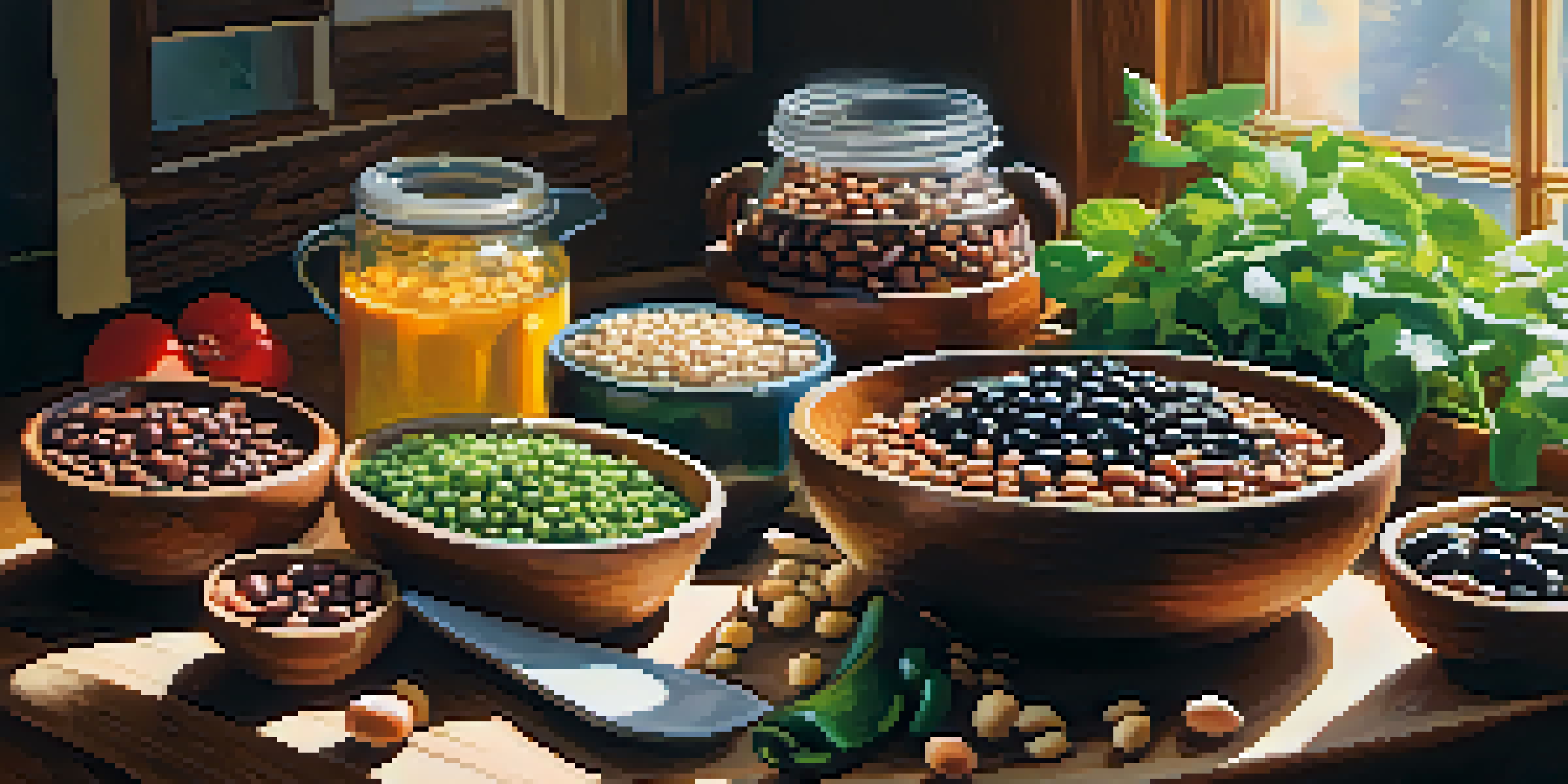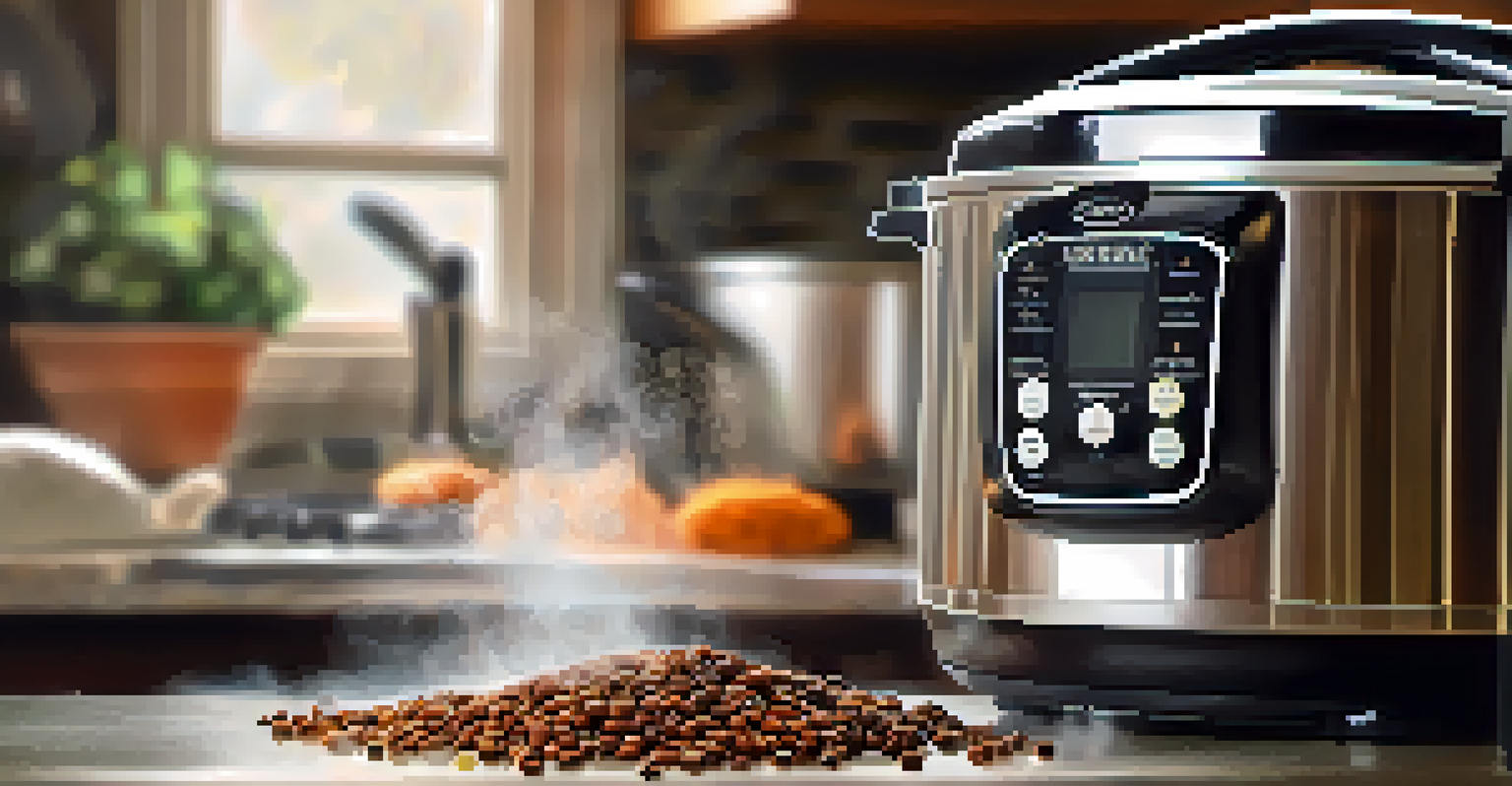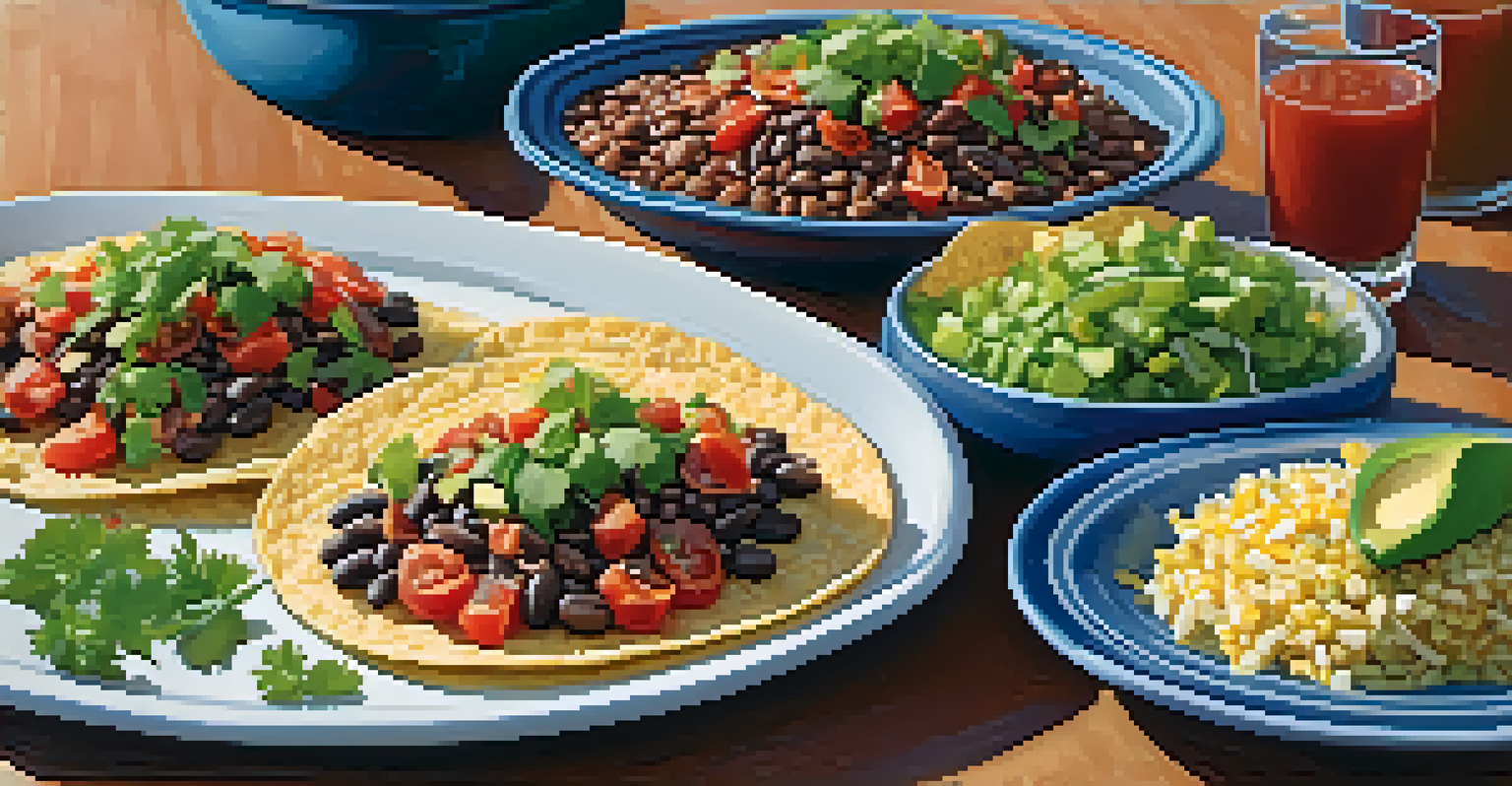Cooking Beans: Methods for Nutritious Vegetarian Meals

Understanding the Health Benefits of Beans
Beans are a powerhouse of nutrition, packed with protein, fiber, and essential vitamins. They are particularly beneficial for vegetarians, providing a meat alternative that supports muscle and overall health. Plus, the high fiber content aids digestion and keeps you feeling full longer, making them a great addition to any meal.
Beans are the most underrated food. They're packed with protein, fiber, and nutrients, yet they often get overlooked in our diets.
Incorporating beans into your diet can help lower cholesterol levels and stabilize blood sugar, making them an excellent choice for heart health. They are also rich in antioxidants, which combat oxidative stress and inflammation in the body. With so many health benefits, it's no wonder beans are a staple in various cuisines around the world.
From black beans to chickpeas, each variety offers unique flavors and nutrients, enhancing both the taste and the health profile of your meals. With this article, you'll learn how to cook them in ways that maximize these benefits, ensuring every bite is not only delicious but also nutritious.
Choosing the Right Beans for Your Meals
There are numerous types of beans, each bringing its unique flavor and texture to your dishes. Common varieties include kidney beans, black beans, pinto beans, and lentils. When selecting beans, consider the dish you want to prepare; for instance, black beans work well in Mexican cuisine, while chickpeas are perfect for Mediterranean recipes.

You can find beans in canned, dried, or frozen forms. Canned beans are convenient and ready to use, but opt for low-sodium varieties to keep your meals healthier. Dried beans require soaking and cooking but offer a fresher taste and can be more economical in the long run.
Beans: Nutrient Powerhouses
Packed with protein, fiber, and essential vitamins, beans are a nutritious staple that supports overall health.
Don't be afraid to experiment with different beans! Mixing varieties can create exciting textures and flavors in your meals. Understanding the best uses for each type will elevate your cooking and keep your vegetarian diet vibrant and varied.
Soaking Beans: The Key to Better Cooking
Soaking beans before cooking is a crucial step that can significantly improve their texture and flavor. It helps to reduce cooking time and makes them easier to digest, minimizing the chances of bloating. Generally, you can soak beans overnight in water or use a quick soak method by boiling them for a few minutes and letting them sit.
The legume family is a treasure trove of nutrition, and beans deserve a place at every table.
Soaking also helps beans to retain their shape and firmness during cooking, which is particularly important for salads or dishes where you want a bit of bite. However, not all beans require soaking; for example, lentils cook quickly and can go straight into your recipes without this step.
By making soaking a routine part of your bean preparation, you’ll not only enhance your meals but also streamline your cooking process. This simple practice can lead to a world of difference in your vegetarian dishes.
Cooking Methods: Boiling Beans to Perfection
Boiling is one of the simplest ways to cook beans, and it ensures they are tender and flavorful. Once soaked, drain the beans and transfer them to a pot with fresh water. Bring the water to a boil, then reduce the heat and let them simmer until they reach your desired tenderness, usually around 1 to 2 hours depending on the type of bean.
Adding aromatics like garlic, onion, or bay leaves to the cooking water can infuse the beans with additional flavor. It’s also essential to check the beans periodically, adding more water if necessary to keep them submerged and prevent burning.
Cooking Beans Made Easy
Soaking and using a pressure cooker can significantly enhance the texture and flavor of beans while saving cooking time.
Once cooked, you can use the beans in salads, soups, or even as a base for veggie burgers. The versatility of boiled beans means the possibilities for nutritious vegetarian meals are endless!
Using a Pressure Cooker for Quick Bean Meals
If you're short on time, using a pressure cooker is a game-changer for cooking beans. This method significantly reduces cooking time, allowing you to enjoy delicious bean dishes in a fraction of the time it would take with traditional boiling. For instance, dried beans that usually take hours to prepare can be done in under 30 minutes with a pressure cooker.
To cook beans in a pressure cooker, simply soak them first, then add them to the pot with enough water, and cook under high pressure. The result is tender, perfectly cooked beans without the lengthy wait. Plus, pressure cooking retains more nutrients compared to other methods.
This technique is especially useful for meal prepping, letting you cook large batches of beans that can be used throughout the week. With a pressure cooker at your disposal, nutritious vegetarian meals are just moments away.
Flavoring Beans: Herbs and Spices to Try
Once your beans are cooked, it's time to elevate their flavor! Experimenting with herbs and spices can transform a simple bean dish into a culinary delight. Classic seasonings include cumin, chili powder, and garlic powder, which can add warmth and depth to your meals.
Fresh herbs like cilantro, parsley, or thyme can brighten your dishes and provide a fresh contrast to the hearty texture of beans. For a kick, consider adding a dash of cayenne or smoked paprika to introduce some heat and smokiness.
Endless Ways to Enjoy Beans
Incorporating beans into various meals, from salads to smoothies, makes it easy to boost nutrition and flavor in a vegetarian diet.
Don't hesitate to get creative! Try combining different spices and herbs to discover new flavor profiles. The right seasoning can truly make your bean dishes shine, enhancing their appeal and making them a favorite at your dining table.
Incorporating Beans into Your Daily Diet
Incorporating beans into your daily meals is easier than you might think. Start by adding them to your salads, stews, or grain bowls for an extra protein boost. You can also blend cooked beans into smoothies for a creamy texture, or mash them for spreads and dips, like hummus or bean dips.
Consider using beans as a meat substitute in your favorite recipes. For example, try replacing ground beef with black beans in tacos or chili for a hearty, plant-based alternative. This not only adds nutrition but also introduces diverse flavors to your meals.

With so many ways to enjoy beans, you can easily incorporate them into every meal of the day. From breakfast burritos to dinner casseroles, the possibilities are endless, making it fun and rewarding to embrace a bean-rich vegetarian diet.